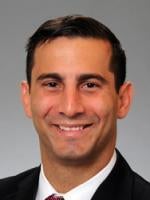Editor’s Note: This article is the first of a series addressing telehealth and substance use disorder treatment, designed to give practical guidance and orientation to health care providers, substance use treatment programs, and entrepreneurs alike.
As COVID-19 cases spread across the U.S., another public health issue continues to escalate: the rise of opioid-related overdose deaths. For patients with a substance use disorder (SUD), the pandemic has increased feelings of anxiety and isolation, while simultaneously limiting access to treatment because of quarantines and outdated regulations on in-person SUD rules.
The public health emergency has highlighted the need for better, more effective SUD treatment options for patients. The need is there, and new technology-enabled companies are starting to deliver services that couple digital health technologies with clinically-proven treatment methods. But delivering SUD services, particularly for opioid use disorder (OUD), remains a highly regulated area. Companies seeking to enter this space are faced with a particularly complicated regulatory framework—on both the federal and state level—that can often leave them feeling discouraged, and hesitant to offer SUD treatment services. However, from an entrepreneur’s perspective, this complexity represents a real barrier to entry that, once overcome, can yield great opportunities to deliver care in new and different ways.
For instance, programs offering SUD treatment services must comply with requirements imposed by several federal agencies, such as the Drug Enforcement Administration (DEA) and Substance Abuse and Mental Health Services Administration (SAMHSA). Then, each state layers on its own requirements for operating SUD treatment programs, with varying levels of detail and scope. Further complicating things for virtual care entrepreneurs is that many of these laws have not contemplated the use of telehealth technologies for SUD treatment programs.
During the public health emergency, telehealth has emerged as a promising and powerful tool to deliver effective SUD treatment services to patients, including providing medication-assisted treatment and remote counseling. Realizing telehealth’s potential benefits, federal and state lawmakers issued temporary emergency actions to relax statutory and regulatory restrictions relating to the provision of SUD treatment services via telehealth. As many of these temporary restrictions are set to expire, some lawmakers are seeking to make these temporary changes permanent, as well as adjusting policies and licensing regimens to allow for the use of telehealth in SUD treatment programs going forward. The public health emergency was recently extended for an additional 90-day period.
Basics of Federal Regulation of Substance Use Disorder Treatment Programs
One tool used to treat SUD is Medication-Assisted Treatment (MAT), which utilizes medications combined with psychosocial counseling and other behavioral health support services. To the extent MAT involves a controlled substance, prescribers must comply with the federal Controlled Substances Act (CSA) which, among other things, requires practitioners to have a DEA registration in each state the patient is located. Practitioners seeking to treat patients in multiple states must have a DEA registration in each state they plan to prescribe controlled substances to patients. Furthermore, practitioners prescribing controlled substances via telehealth must comply with the federal Ryan Haight Act, which requires practitioners to perform an in-person examination prior to issuing such a prescription, subject to a narrow list of exceptions. (DEA’s waiver on Ryan Haight Act is discussed below.)
A common medication used in the context of MAT for OUD patients is buprenorphine, a Schedule III controlled substance under the federal CSA. Certain federal registration and licensure requirements apply to providers seeking to treat patients with buprenorphine for OUD, beyond those applicable to controlled substances generally. To start, under the federal Drug Addiction Treatment Act (DATA 2000), qualified practitioners may apply for a waiver to prescribe or dispense buprenorphine for the treatment of OUD outside of a SAMHSA-certified opioid treating program (OTP) setting. (Prior to the DATA 2000, buprenorphine could only be prescribed, dispensed, or administered within an OTP, which is commonly referred to as a methadone clinic.)
Qualified practitioners who meet certain licensure, training, and educational requirements can apply to SAMHSA for a waiver, and once approved, are authorized to prescribe or dispense buprenorphine for OUD patients in any setting in which the practitioner is otherwise credentialed to practice (generally, the practitioner’s office). These practitioners are often referred to as “DATA-waived practitioners.” OUD treatment by a DATA-waived practitioner in the office setting is typically referred to as office based opioid treatment (OBOT). OBOTs and OTPs are the most common settings in which OUD treatment is provided. In addition to obtaining the DATA 2000 waiver, practitioners must register with the DEA to obtain a unique identification number beginning with an “X,” and complete any state-level registration or licensure requirements.
Federal Waivers to Facilitate Telehealth-Based SUD Treatment
Until recently, the Ryan Haight Act presented the most significant barrier to providing SUD treatment through telehealth. On March 16, 2020, the DEA invoked the public health emergency exemption to the Ryan Haight Act, enabling providers to prescribe controlled substances via telemedicine without the requisite in-person examination.
DEA and SAMHSA later expanded this temporary prescribing exception for “authorized practitioners” treating OUD patients. As of March 19, 2020, “authorized practitioners” can prescribe buprenorphine to new and existing OUD patients for maintenance or detoxification treatment on the basis of a telehealth examination, which may include a telephone, voice-only evaluation—without the need for a prior in-person exam. This exemption only applies to “authorized practitioners,” which means practitioners who work in a registered OTP or DATA-waived practitioners.
On March 23, 2020, the DEA waived state-specific DEA registration requirements for practitioners prescribing schedule II–V controlled substances via telemedicine. During the emergency period, a DEA-registered practitioner—who is registered in at least one state—may prescribe controlled substances to patients in states in which the practitioner is not registered.
Proposed Legislation to Make These Changes Permanent
While these temporary waivers are only effective for the duration of the public health emergency, there is promise of more permanent changes to come, as recently, a new bill (S.4103), the Telehealth Response for E-prescribing Addiction Therapy Services (TREATS) Act, was introduced in Congress. The TREATS Act would amend title XVIII of the Social Security Act, which governs the Medicare program, to increase the use of telehealth for SUD treatment, and would make certain temporary emergency actions passed during the COVID-19 period permanent.
The primary takeaways from the proposed legislation are that the bill would:
- Amend the federal Ryan Haight Act (21 U.S.C. § 829(e)(2)), to allow a practitioner to prescribe certain controlled substances via telemedicine without conducting a prior in-person medical evaluation. Specifically, the text of the proposed TREATS Act would revise the definition of “valid prescription” in subparagraph (A)(i), to remove the in-person requirement for purposes of prescribing schedule III or IV controlled substances and allow such prescriptions to be issued pursuant to a “telehealth evaluation.”
- Add a new defined term, “telehealth evaluation,” which means a medical evaluation conducted remotely in accordance with applicable state and federal law via two-way real-time interactive communication between the patient and distant site practitioner. The bill would also specify the modality that could be used to conduct such telehealth evaluation and allow DATA-waived practitioners to prescribe approved controlled substances via telehealth for MAT (i.e., buprenorphine).
- Reiterate the requirements that prescriptions must be issued for legitimate medical purposes in the usual course of professional practice, and that DATA-waived practitioners must adhere to nationally recognized evidence-based guidelines for treatment of patients with OUD and a diversion control plan, as defined in the federal OUD treatment regulations, at 42 C.F.R. § 8.2.
- Amend the Social Security Act relating to Medicare coverage for SUD treatment services furnished through telehealth, to allow the use of audio or telephone only technologies by practitioners who have already conducted an in-person medical evaluation or telehealth evaluation using both audio and video capabilities.
Although the TREATS Act does not go as far as the DEA’s temporary controlled substance prescribing exemption in some aspects, if enacted, it will signify a major shift and a step toward permanently expanding access to SUD treatment. For example, the DEA’s temporary waivers apply to prescribing all schedule II–V controlled substances, while the TREATS Act would only apply to schedule III and IV controlled substances. But the impact on DATA-waived practitioners would remain the same, as the TREATS Act would still authorize prescribing buprenorphine, a schedule III drug, via telemedicine without a prior in-person evaluation. Health care providers and telemedicine companies should recognize the importance of this progress, as it is an opportunity to contribute their voices and help shape public policy on SUD and virtual care services.




 />i
/>i
